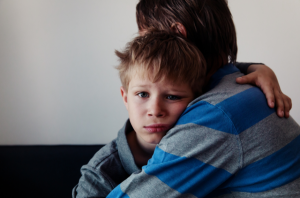News
July 25, 2024
/Pro Tips
Pro Tips: Co-regulation and self-regulation
 Pro Tips provided by Nicole Conte, M.Ed., BCBA, LBA, case manager at Summit Academy Enhanced, and Nicole Folaron, M.S., OTR/L, clinical mentor and occupational therapist at Summit Academy Enhanced.
Pro Tips provided by Nicole Conte, M.Ed., BCBA, LBA, case manager at Summit Academy Enhanced, and Nicole Folaron, M.S., OTR/L, clinical mentor and occupational therapist at Summit Academy Enhanced.
Regulating emotions and behaviors is an important life skill for both adults and children to learn. When our emotions and feelings are regulated, we can better handle stressful situations, make thoughtful decisions, and calm ourselves when needed.
What is co-regulation and self-regulation?
Co-regulation is the way you support another person in regulating their arousal, thoughts, attention, feelings, or behaviors through your own attention, feelings, and behaviors. Self-regulation is when the individual can regulate their emotions, thoughts, behaviors, etc. on their own. It’s easier for an individual to learn how to self-regulate after learning skills through co-regulation first.
Regulation methods are specific to each individual.
Every child is different, so methods that work for some individuals may exacerbate feelings or behaviors in others. Discuss any co-regulation methods you want to practice with your child’s teacher, therapist, or staff to ensure a cohesive learning structure.
When practicing co-regulation, the most critical aspect is that you, as the parent or caregiver, are present. Your full attention and focus need to be on the child, whether you are modeling calming techniques or supporting your child through the situation with your own actions and ability to regulate.
Some examples of regulation methods may include opportunities for needed movement, controlled breathing, activities or responses that distract current thoughts, addition or removal of certain environmental stimuli, modeling calming procedures, providing verbal reassurance, and other specific sensory strategies tailored to your child’s needs. Consistency in scheduling and predictability can also help in a proactive way to help keep your child regulated.
Practicing co-regulation at home.
Co-regulation doesn’t always have to be reactive. You can help your child practice regulation throughout the day by using methods like deep breathing when they’re already calm. When your child is not in distress, practicing co-regulation techniques helps them learn coping strategies proactively.
If your child is already showing signs of distress, make sure your emotions are calm and regulated before approaching them. If you are anxious or showing signs of stress, your child may pick up on that, which could worsen the situation.
Keeping eye contact is essential. Although children with autism may have difficulty making eye contact, if they happen to look at you, they will know your full attention is on them. Avoid saying phrases like, “It’s okay,” because it’s not okay for them at that moment. Say something like, “I’m here. We can do this together,” or, “We’re in a safe place. If you need something, I’m here.”
Providing reassurance doesn’t need to be verbal. You can offer reassurance by being near your child or using body language that lets them know you are there to help them.
Talk to your child’s team.
Parents know their children best, but if you’re having trouble practicing regulation strategies and techniques at home, don’t hesitate to contact your child’s occupational therapist and behavior consultant. They are there to support you and your child and can collaborate with you on co-regulation strategies that will work best for your family.